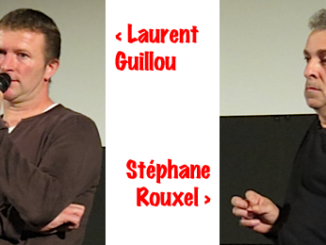
Thus far, the story has been a positive one. French officials have defended the greening principle, the 100% phasing out of historical payments as well as a new top up on first hectare (degressive payments).
In the final Multiannual Financial Framework (MFF) talks last February, an emboldened President Hollande made the case in front of Angela Merkel, to resist any Greening or Ecological Focus Areas ( EFA) dilution. An extra billion euros for Pillar 2 was also achieved.
However in the end, it seems France is falling short again, judging the head of State’s recent behaviour. CAP implementation à la française would not be so revolutionary. So France will tip toe towards a fairer CAP, slowly.
Potentially, flexibilities offered by the EU deal would allow France to redistribute a tremendous part of its annual 7,5 billion euros on Pillar 1 and 1,4 billion on Pillar 2. But what will actually happen?
Livestock and employment as key directions
Promises made by Président Hollande and its agricultural minister Stéphane Le Foll during the last elections focused on livestock sector and on employment support. By aiming to support farmers through the top up on first hectares, this could indirectly contribute to employment.
Introducing the livestock summit in Cournon d’Auvergne on October 2nd, President Hollande focused on CAP 2014-2020 and the importance of the livestock sector.
First, France will optimise coupled aids, maintain the current ones and add new ones for dairy cows, veal and vegetal proteins (+250 mio €), reaching a total 1,125 billion euros.
Then President Hollande announced extra money towards less favoured areas (LFAs) thanks to a revalued LFAs Pillar 2 envelope which will receive 200 mio € of what was grassland premium. He also promised an extra 200 mio € for livestock buildings modernisation.
A very small redistribution of decoupled payments
Obviously, having first proposed a top up on first hectares in the EU talks last year through the European Parliament, it would have been bizarre for Stéphane Le Foll to then not apply it in France.
However, the French decision turns out to be a half-hearted measure, stopping at 20% for this top-up and stopping at 70% the maximum convergence of direct aids towards 2019.
In July, if Le Foll had sent four scenarios including one highlighting a preference for the optimal redistribution among farmers (100% convergence and 30% top up on first hectares), he seems to have capitulated to the head of State’s preferences.
Indeed, the day before those announcements François Hollande heard the FNSEA chief argue for a slow redistribution to avoid any disturbance for large cropping and intensive livestock farmholdings.
So if CAP implementation will benefit more grassland systems and small and medium farmholdings, it will be in a very limited way: less than 500M€ are to be switched from larger farms above 100 hectares to those under 100 hectares.
Agroecology abandoned
Over the past 10 months Le Foll has been strong on French agroecological ambitions, having promised that Pillar 2 money would be shifted to this area. But in the end nothing remains.
Whether President Holland has advocated doubling the agro-environmental budget (knowing that grassland premium envelope moves to LFAs) and also the organic acreages, no budget has been put on the table to achieve these targets. This lack of action has been strongly criticised by the Groupe PAC 2013 platform.
Do it’s not yet a paradigm shift nor an historical move in the French CAP. Accounts will be made in the weeks ahead to check on the progress of the above announcements. However already some commentators fear that subsidy redistribution may not be any more significant than that of former agricultural minister Michel Barnier in 2009 after the CAP health check.
François Hollande’ new announcements in detail
-Coupled aids : 1,125 bilion € total including an extra 250 mio € for dairy cow, veals and protein crops
-Decoupled aids : 70% Convergence of direct aids towards 2019 (2,55 bilion euros) and top up on 52 first hectares using 20% of direct payments (1,5 bilion €) in 2019
-Proportional green payment
-Young farmers : 1% Pillar 1 top up (75 mio €) + 25 mio € from Pillar 2
-Less favoured areas +300 mio € (Pillar 2)
-Modernising livestock buildings: 200 mio € (EU & national, Pillar 2)
-Risk instruments: 85 mio € (Pillar 2)
See here for more.





